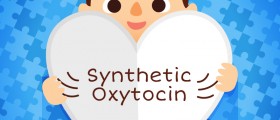
What is Dyslexia?
Dyslexia is a type of a learning disability usually first detected in preschool or early school years, as it affects reading and writing skills. Adults who have had to live with dyslexia may disagree with the scientific definition of the disorder and simply term it a special mode of thought rather than a disorder resulting from brain damage or auditory and visual impairment. Also, before humans started using written language dyslexia did not exist in today’s shape or form. Adults with dyslexia who overcame the disorder postulate that it is merely a quicker perception of mental concepts compared to the general non dyslexic population.
As is the case with many learning disabilities, there are many instances in which they are not in any way connected with intelligence. No matter how vast or limited a person’s capacities may be it is important that they are given the opportunity to realize their full potential. Individuals who learn to overcome learning disabilities, such as dyslexia, go on to become artists, inventors, engineers, architects and so on. In addition, many persons who have dyslexia claim they are visual and conceptual thinkers and feel little need to verbalize their thoughts. As such importance is placed on reading, writing, and speaking in the educational system they are diagnosed with a learning disability.
For dyslexic individuals phonetic symbols are puzzling and they have difficulties with reading and writing as a result. Mainly, letters which are placed in the wrong order, written upside down, or reversed are problematic to process. For instance, a dyslexic child finds it tough to recognize that when the letter “c” in “cat” is substituted by a letter “b” the word changes its meaning from cat to bat. Consequently, the child is confused and unless there in an early recognition by the teachers and parents that the individuals is struggling such confusion eventually leads to frustration and sometimes to behavioral problems. On the other hand, if an adult from the child’s life realizes that the pupil needs assistance, plenty of different learning methods are available to meet the needs and capabilities of those with learning disabilities. If the child is left to struggle by the age of 8 or 9 he or she is finding classes like art, science or music enjoyable but avoids anything that has to do with reading and writing. Not surprisingly, unless the teachers and caregivers understand the child and show love, compassion, and support, the self-esteem of the individual is bound to be negatively affected. In cases in which a dyslexic person goes unnoticed and grows up to be a functionally illiterate adult he or she is embarrassed by the inability to read and write like everyone else and may become isolated and hostile. It should be noted that even if a child has a learning disability with proper help they can achieve high grades, stay in school until the end of college, develop vocational skills, and be active and successful contributors to the workforce just like anybody else. Their path to that destination is a little different, but nevertheless achievable.
Diagnosing Dyslexia in Adults
When it comes to diagnosing any type of medical or psychological condition early diagnosis means early treatment and more time to deal with the problem before it affects all aspect of the individual’s life. However, dyslexia can in many cases go undetected for years and be diagnosed in adulthood instead in early school years. There are numerous instances in which pupils who cannot read and write properly by the age or 10 or 11 are considered unmotivated and intellectually challenged. In addition, many experts will agree that dyslexia is due to faulty wiring in the brain between learning and language centers. Certain defective genes have also been identified as in part responsible for the development of dyslexia. Further, dyslexia is considered a developmental problem even though there are instances in which individuals only become dyslexic later in life due to a stroke or head trauma. Most cases of dyslexic individuals are found among adults who have had problems ever since they started school but never got appropriate help until they became adults and realized what was causing the difficulties by seeking proper medical attention themselves. The earlier the diagnosis is set the sooner the intervention can begin, but even if it takes place later in life it is still effective to a varying degree. Brain plasticity is one factor which makes late intervention less effective as a younger brain is more susceptible to change and better able to learn new concepts and skills. The brain continues to develop well into the early 20s and is until that age easier to rewire as it hasn’t yet reached its mature state. For those who are older than early 20s and recently diagnosed with dyslexia intervention can be useful but its effectiveness depends on many different factors such as the extent of the condition and the person’s overall ability to acquire new knowledge.
















Your thoughts on this
Loading...